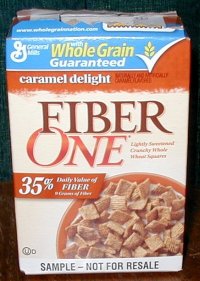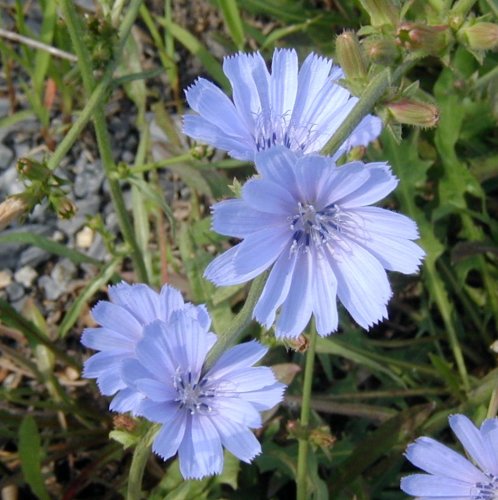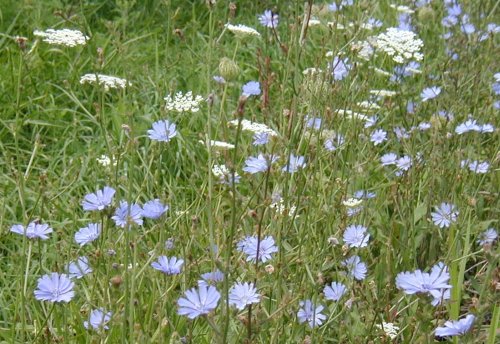This morning I found the cereal cupboard bare except for a sample-sized box of Fiber One cereal, made by General Mills. Left behind by one of the summer guests of the mountain, I figured that the children chose all the really sweet ones first.

Fiber One sample cereal box.
I wouldn’t have purchased the small boxes because they have too much packaging to throw away. Different from the scored boxes we had as kids that doubled as bowls, this one had no scoring, and instead, the cereal was safe inside a heat-sealed plastic bag. Eating milk and cereal right from the box was fun – probably a memory from my childhood that today’s little ones won’t experience.
As I munched on the surprisingly sweet cereal right out of the bag, I just had to read the ingredients to see which sweetener was inside…sugar (second ingredient), fructose and dextrose. There’s little surprise there. Maybe it’s a great source of fiber with 9g per 1 cup serving, but the carbs, at 41 g, might be a little high for a diabetic.
Here’s the ingredient list for those of you trying to find a healthy alternative to Sugar Smacks:
whole grain wheat
sugar
corn bran
chicory root extract
maltodextrin
rice bran and/or canola oil
fructose
salt
dextrose
trisodium phosphate
soy lecithin
natural and artificial flavor
bht added to preserve freshness
enriched with a host of vitamins and minerals
There’s some whole grain goodness inside, but probably too much sugar to earn a gold star.
Surprised by the fourth ingredient, chicory root extract, I’m wondering if that is the ingredient responsible for the “caramel delight” flavor. What gives the natural and artificial caramel flavor? Perhaps the chicory root provides the light brown color. Before reading it on this cereal label I’ve only heard of roasted chicory root being used as a coffee substitute. It has to impart some taste to the cereal, doesn’t it? I wonder what other foods contain chicory root extract.
Chicory, Cichorium intybus, is in bloom all along the country roads in Pennsylvania. The sky blue blossoms are really pretty especially when a lot of chicory grows together.


Chicory flowers along the Pennsylvanian country roads.
Up close you can see that the petals are fringed at the ends. The chicory flowers are sessile and appear to be attached right at the stem. Leaves are few and variable along the stem and basal leaves are similar to dandelion. Long, arching blue stamens stand out nicely.

Fringed petals of chicory give its flowers a unique look.

Queen’s Anne Lace seems to be chicory’s main cohort. I see them together everywhere along the country roads and in empty fields.
The long tap root of chicory can be roasted for use as a beverage like coffee and, as I’ve read more about it, chicory leaves can be used in salads. Commercial growers in Michigan and a few other states in the Midwest now provide most of the chicory consumed in the U.S. It is an alien plant that European settlers imported into their new country.
Chicory root contains a sugar-like compound that is most likely used for soluble fiber content in my morning cereal.
As a follow up… I contacted General Mills about their Fiber One cereal. I let them know that I didn’t care for the amount of sugar in the cereal and that the strong top-coating of granulated sugar wasn’t necessary.
However, they did verify that chicory root extract provided the high amount of soluble fiber in the cereal. So, if you’re looking for a sweet alternative to eating your vegetables, their Fiber One cereal may be just right.
I want to remark that the companion plant by the chicory is Carrot, not Queen Annes Lace. Carrots make beautiful flowers that do not shed and get messy, and the blooms turn inside out when their ready to spit out seed, like some of the ones in the photos.
Hey Rose,
I’m wondering if you call another plant by the name of Queen Anne’s Lace? I double-checked my field guides and none of them use QAL for anything but the Wild Carrot. So as far as I know wild carrot and QAL are indeed the same plant, Daucus carota, of the parsley family. A guide to the true identification is, as you point out, the manner in which the older flower heads turn up into a cup-shaped “bird’s nest”.
Thanks for your remark!
Hi, lovely website… and very interesting! I especially love the pictures and photo’s you include. 🙂
If I may be so bold as to ask if I can please use two or three of the above photos on my own blog… with active link back… I look forward to your reply.
Many thanks
Mands
Thank you for the lovely compliment, Mands!
I think this is one of the such a lot vital info for me. And i’m glad studying your article. But want to observation on some normal things, The site taste is ideal, the articles is really great : D. Good activity, cheers
Thank you so much for your nice comments, Peaje.
Wild carrot is edible, and the companion plant is wild carrot also called Queen Anne’s Lace, but before harvesting wild carrot make sure that you can differentiate between it and poison hemlock, a common lookalike plant.
It’s actually fairly easy with practice, hemlock has loose umbrels and a purple coloration low on the stem, but it does have white flowers that grow in umbrels with similar looking leaves.
Honestly though, to a seasoned eye all of those pictures look like a delicious stir-fry in the making.
Oh, and please don’t harvest food from the roadside like that. There can be toxic runoff.
Hi Erin,
I think the best way to tell poison hemlock from Queen Anne’s Lace is to smell the foliage or flowers. It has a putrid smell or at least it’s offensive to me. The flowers are in more of a flat top in QAL and the hemlock has its umbels more sphere-like.
Have you stir-fried these weeds in a pot together? Sounds interesting….
That’s a good idea to stay away from collecting food plants right next to a road. Depending on the level of traffic there’s also some amount of exhaust that can be taken up by roadside plants, but this uptake would be reduced on the less-traveled country roads. Toxic runoff can be found near agricultural fields too, so it’s not just busy roadways where one should be careful collecting.
Thanks for the tip, Erin!
Hello,
I am trying to find a way to contact you directly but don’t see a way to do that, so I’ll just post my question here. I just happened on your photo of Queen Anne’s Lace with the blue chicory. It is perfect for a poem I am including in a self-published book and am wondering if I might use your photo with attribution? I realize you may get this kind of request often, so am hoping it’s not presumptuous.
Would be happy to send you the poem if you like.
Yes, Susan. You can certainly use my photo and just attribute with wildeherb.com, ok? I’d love to read your poem also! Thanks so much.
Reach me at wilde aT wildeherb.com.